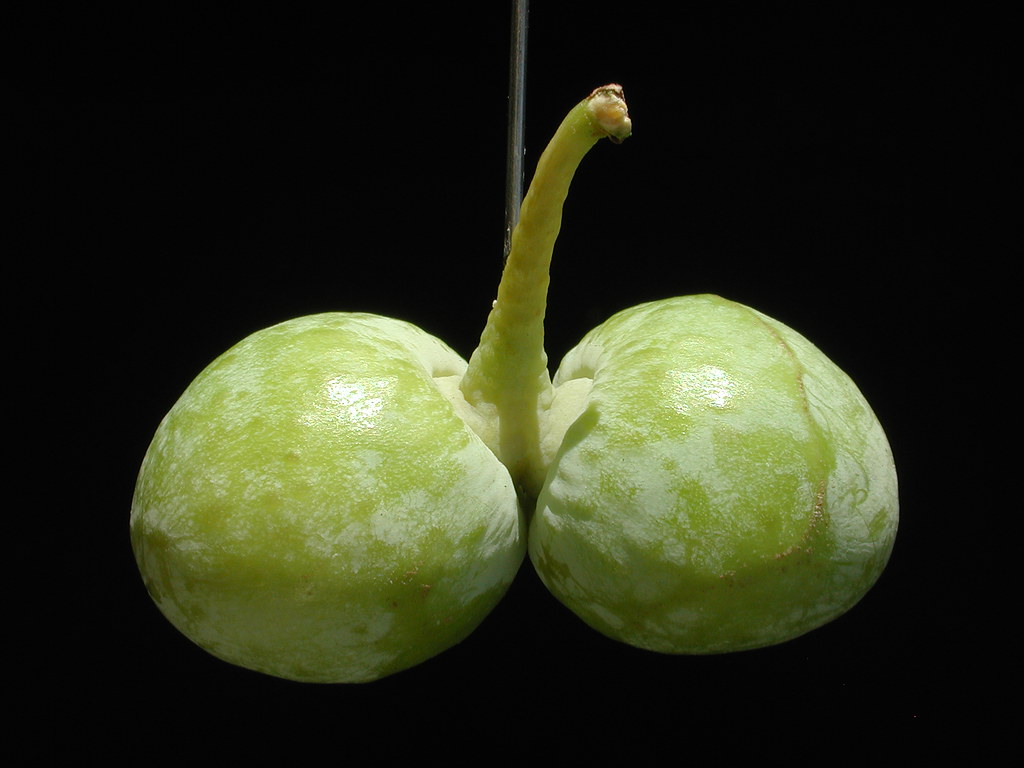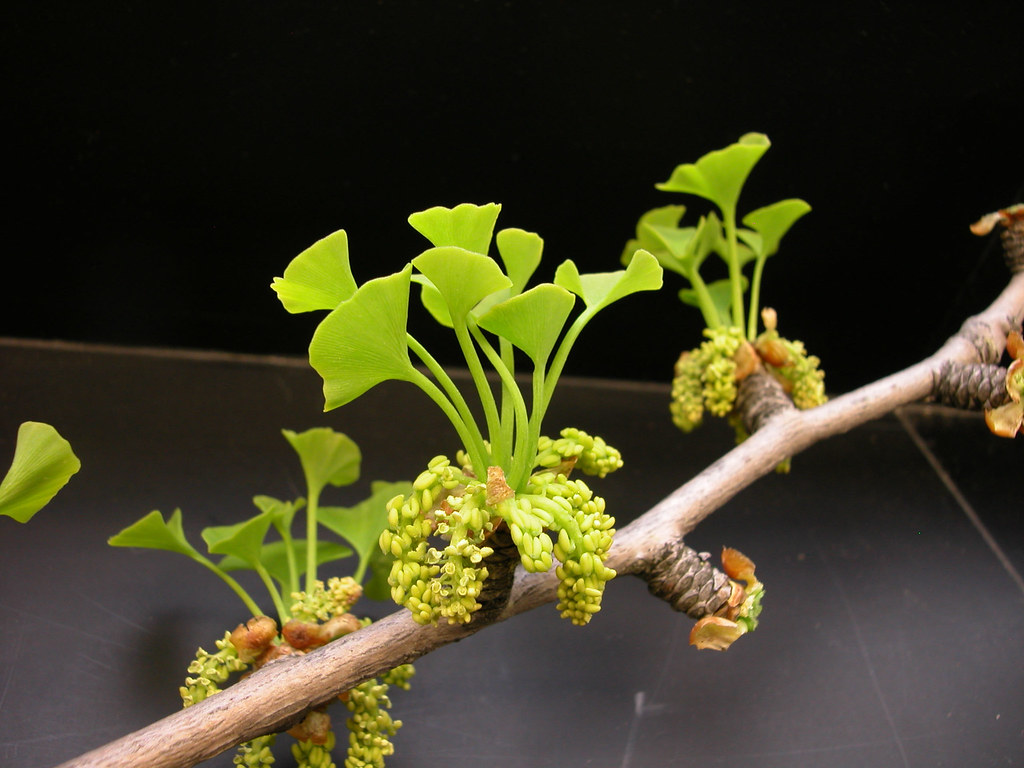It’s Stinking Ginkgo Time!
Posted in Gardens and Collections, Science on October 21 2008, by Plant Talk
 |
Karen Daubmann is Director of Exhibitions and Seasonal Displays. |
 If you’re walking or driving along the perimeter of the Botanical Garden on Kazimiroff Boulevard, you might be detecting a pungent, foul odor in the air. You might also be seeing people collect what seems to be the source of that smell.
If you’re walking or driving along the perimeter of the Botanical Garden on Kazimiroff Boulevard, you might be detecting a pungent, foul odor in the air. You might also be seeing people collect what seems to be the source of that smell.
It is the time of year that female ginkgo trees drop their fleshy fruit, which when crushed by passing cars or pedestrians release a stench that has been likened to rotten butter, vomit, or dog excrement. It is what gives the ginkgo tree a bad name.
Though they smell terrible, the female cones, once harvested and processed, reveal seeds known as “white nuts” or “ginkgo nuts.” These seeds are a delicacy in Chinese and Japanese cooking, used in stuffing, soups, and even desserts. This treat is also nutritious, containing 13% protein and 3% fats. That is why female ginkgo trees are sought out at this time of year by those who envision making Bird’s Nest Soup and other traditional Asian dishes. Ginkgo seed hunters carry gloves and Ziploc bags while wearing shoes with soles that can be easily washed.
 Are you familiar with the ginkgo tree? These stately trees—mature trees can reach 100 feet tall—have light-gray bark and fan-shaped leaves. As they age, the crown of the tree gets wider, and in autumn its turn golden yellow. Ginkgo, or maidenhair tree, is known as a “living fossil,” because it was a common tree species when dinosaurs roamed Earth, about 225 million years ago. Ginkgo was thought to be extinct until several plantings were discovered in eastern China.
Are you familiar with the ginkgo tree? These stately trees—mature trees can reach 100 feet tall—have light-gray bark and fan-shaped leaves. As they age, the crown of the tree gets wider, and in autumn its turn golden yellow. Ginkgo, or maidenhair tree, is known as a “living fossil,” because it was a common tree species when dinosaurs roamed Earth, about 225 million years ago. Ginkgo was thought to be extinct until several plantings were discovered in eastern China.
Learn why the ginkgo tree is unique after the jump.
Ginkgo is an unusual tree for a number of reasons.
• Ginkgo is considered a conifer but unlike typical conifers (pine, spruce, fir) it does not have needles. Its leaves fall to the ground each autumn.
• Ginkgo is a monotypic species, meaning that the family Ginkgoaceae contains only one plant, Ginkgo biloba. Families like Aceraceae (maples) contain over 100 species.
• Ginkgo is dioecious, meaning that each tree has its own sex, either male or female. The sex can’t be determined until the tree reaches fruiting age, which takes nearly 20 years. Modern cultivars, including ‘Autumn Gold’ have been created through grafting, which splices cuttings from male ginkgo trees onto ginkgo rootstock grown from seed.
• Ginkgo biloba leaves are harvested, made into pills, and sold as an herbal remedy for improving long- and short-term memory.
Because of the ginkgo’s graceful leaves, gorgeous fall color, hardiness, and ability to endure pollution, it is a worthy and popular choice as a street tree—that is, the male ginkgo, which doesn’t bear fruit.
According to the City of New York Parks and Recreation Department’s 2006 Trees Count! street tree survey, there are nearly 16,580 Ginkgo biloba planted as street trees within city limits. That means that at this time of year, while enjoying the golden fall color of ginkgos, be careful where you step!

